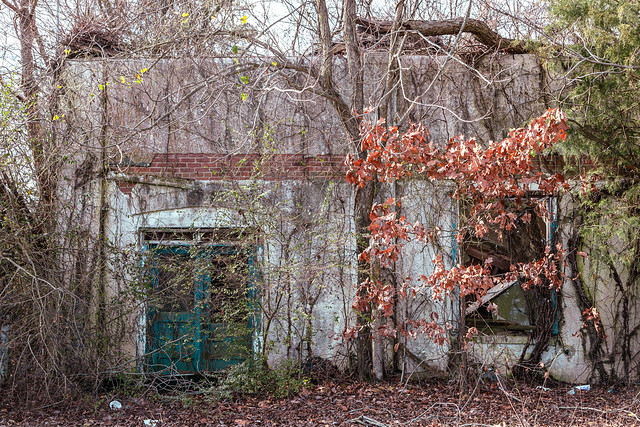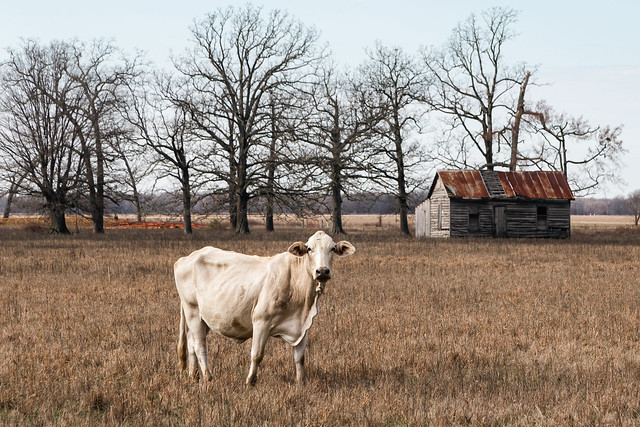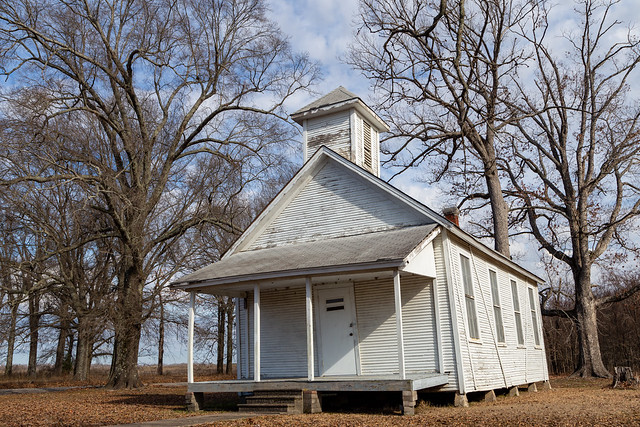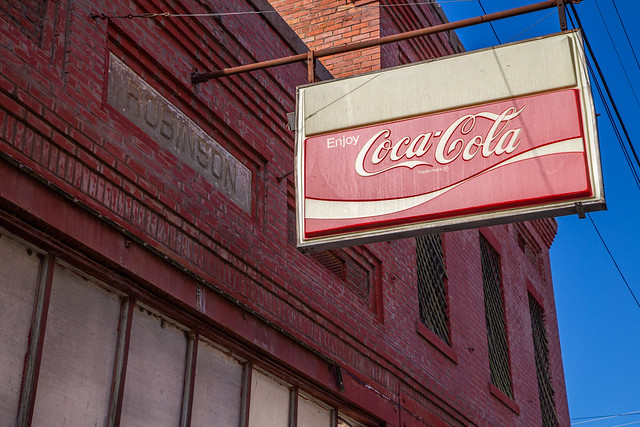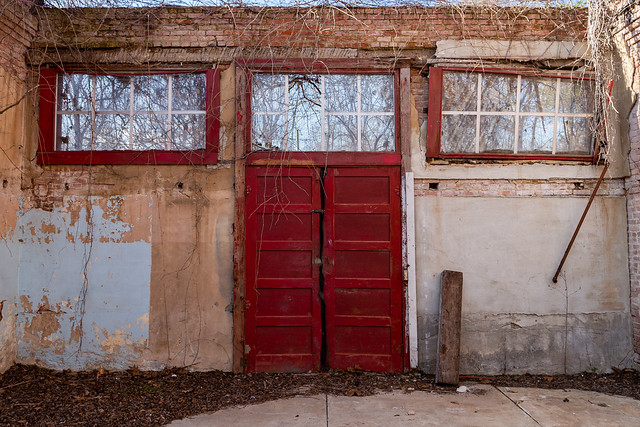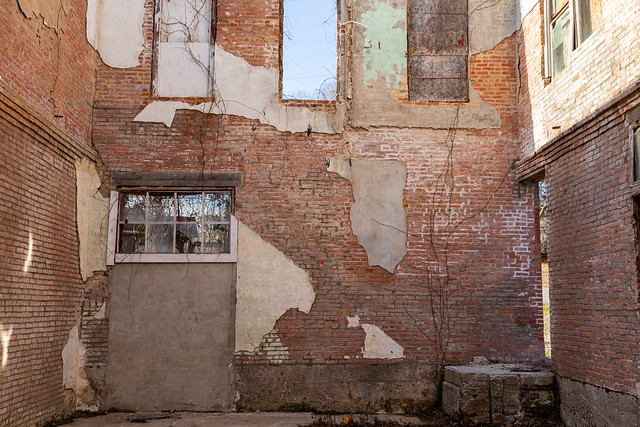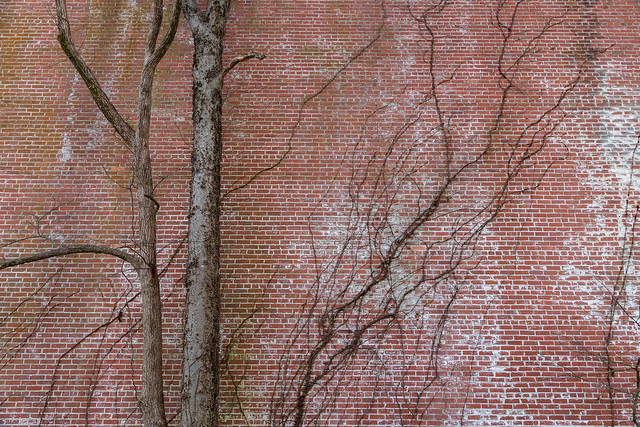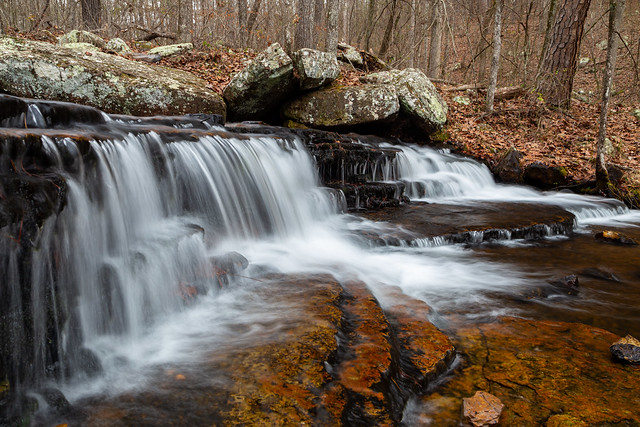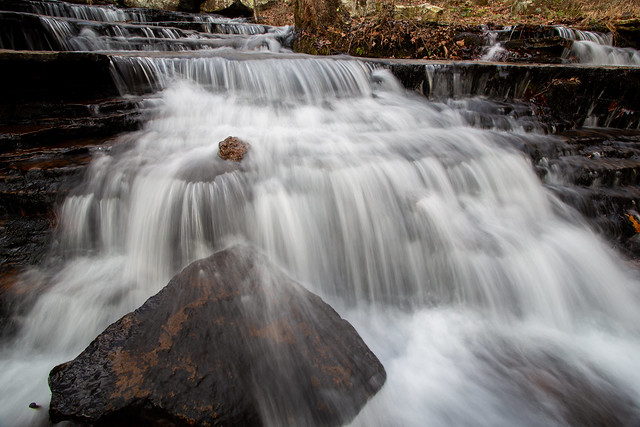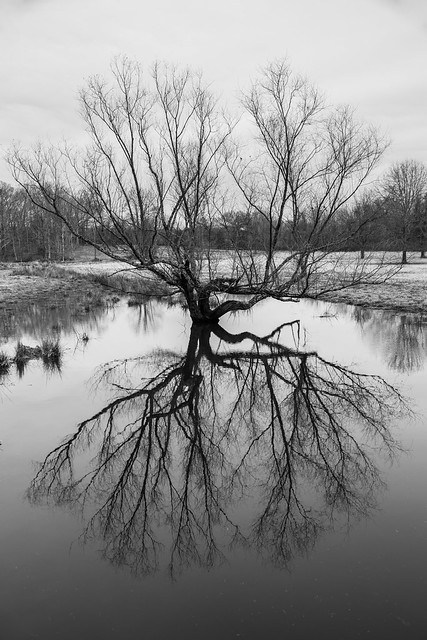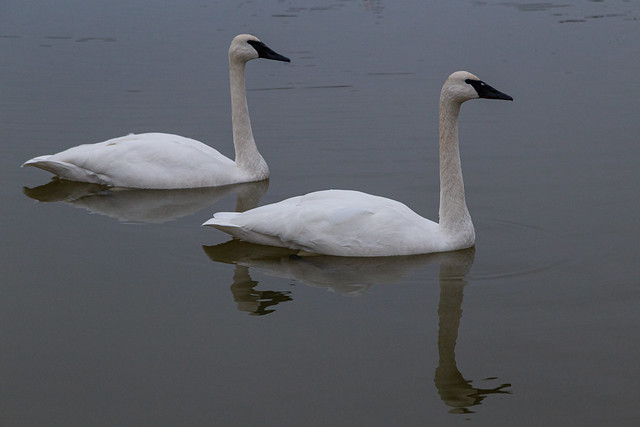2022 was a good year. Jonah graduated from kindergarten and then moved to first grade. Elliott entered the Terrible Twos, something that he excels with already. I was glad to finally get my photography exhibition up on the walls after it was delayed for two years. I'm incredibly thankful for the Laman Library in North Little Rock, who hosted the show and provided me this opportunity to share my photography.
And for the first time since Covid, we were actually able to really do a bit of traveling! We made two trips out West in 2022, and there are a few pictures from those travels below. They are mixed with several trips taken while driving across Arkansas, so without further ado here are some of my favorite pictures from the last year!
#25:
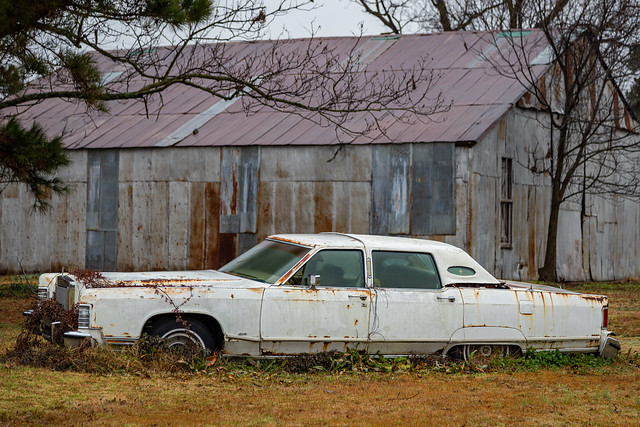 January 15: Tucker, Arkansas.
January 15: Tucker, Arkansas.
An old car (a Lincoln, I think), parked in front of a rusty old and abandoned building in the small town of Tucker. It looks like this car has been here for awhile, but I bet it was someone's pride and joy back when it was fresh off the lot back in the 70s. As with so many things left behind in the Delta, it makes you wonder about its history and the story of how it ended up here.
#24:
 March 22: Boxley Valley, Buffalo National River, Arkansas.
March 22: Boxley Valley, Buffalo National River, Arkansas.
This old barn, which was built in the 1920s, is one of my favorite barns in Boxley Valley. To get this picture I was sprawled out on the ground with the camera lens nearly touching the water of this large puddle.
#23:
 April 17: Davies Bridge, Petit Jean State Park, Arkansas.
April 17: Davies Bridge, Petit Jean State Park, Arkansas.
This stone bridge was built in 1934 by the Civilian Conservation Corps. They definitely knew what they were doing, since the bridge perfectly lines up with the waterfall behind it.
#22:
 February 26: Inspiration Point, Bryce Canyon National Park, Utah.
February 26: Inspiration Point, Bryce Canyon National Park, Utah.
My wife and I travelled to Utah in February and visited two national parks. I had always wanted to visit to Bryce Canyon, and it was breathtaking to see the intricate and delicate hoodoos covered with a coat of fresh snow. Many thanks to Caroline for planning this trip, and to her parents who were kind enough to watch the kids for us while we went out of state!
#21:
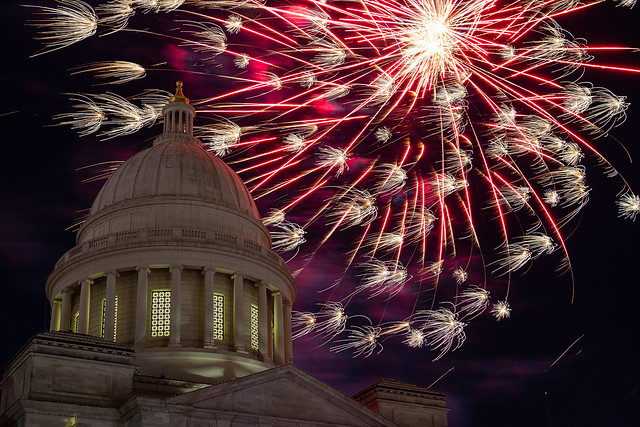 December 3: Arkansas State Capitol, Little Rock.
December 3: Arkansas State Capitol, Little Rock.
The annual fireworks show at the State Capitol is one of the best things that the state of Arkansas does every year. Although this year is didn't go off exactly as planned. Apparently there was a glitch with the computer program that handled the lights and fireworks for the show, which froze up just when the show was to start. This resulted in all of the people waiting in the dark for about 15 minutes. But luckily it got all sorted out and there finally was a nice little fireworks show.
#20:
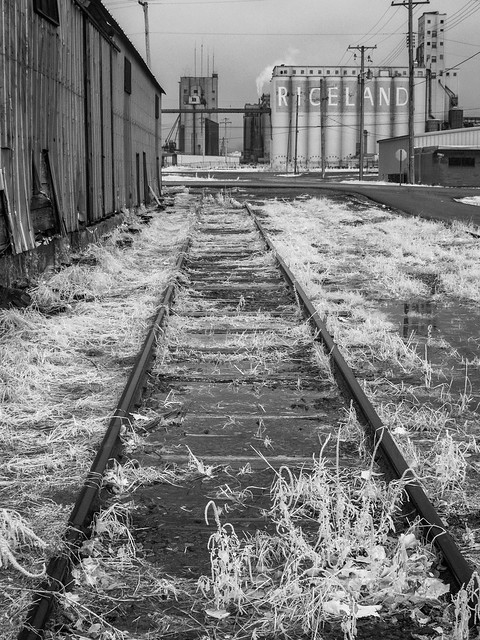 October 29: Stuttgart, Arkansas.
October 29: Stuttgart, Arkansas.
The Arts Center of the Grand Prairie in Stuttgart was also kind enough to host my photography exhibition for a month. I drove to Stuttgart on a stormy day in October to drop off the 33 pictures, and then had some time to take a few pictures before driving back. Stuttgart is an interesting little town, and has lots of neat things to photograph. This was a set of disused train tracks running by an abandoned building, with the massive Riceland complex in the background.
#19:
 December 5: Little Rock, Arkansas.
December 5: Little Rock, Arkansas.
I love taking pictures in the fog. But not surprisingly I was the only person out and about that night, there wasn't anyone else out that night visiting the Little Rock Christmas tree in the gloomy weather.
#18:
 February 24: Zion National Park, Utah.
February 24: Zion National Park, Utah.
A winter storm hit southern Utah the day before we arrived, which left the perfect amount of snow. The fallen snow looked amazing while contrasted against the red rocks of Zion, but it wasn't enough that it made driving too difficult for people from Arkansas. We woke up early in the morning and drove into the park and were just amazed at how beautiful it was.
#17:
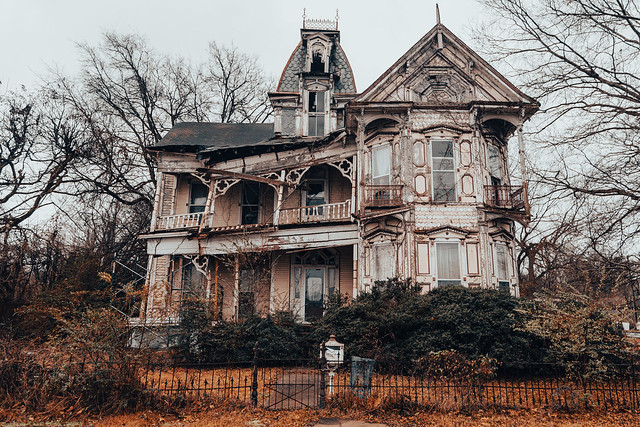 January 15: Pine Bluff, Arkansas.
January 15: Pine Bluff, Arkansas.
The ornate but fragile R.M. Knox House, which was built in 1895 and is considered to be one of the best examples of Eastlake Victorian architecture in the state. I try to get a picture of it anytime I'm in Pine Bluff, since I'm not sure how much longer it will be standing.
#16:
 September 26: Rainbow Curve Overlook, Rocky Mountain National Park, Colorado.
September 26: Rainbow Curve Overlook, Rocky Mountain National Park, Colorado.
In September we flew to Colorado for my cousin's wedding, which was quite an adventure since we went with our two small children. But amazingly, both did well on the flights. Caroline heard about a new trend where you bring a car seat with you on the plane, which makes it easier to contain an unruly toddler. The only downside is that you have to carry the car seat with you at the airport, which can get a bit stressful if you have a narrow connection and you have to run across the Dallas airport to your next flight. Luckily we all made it to the plane on time.
One of the highlights of the trip (besides the wedding of course), was our visit to Rocky Mountain National Park. We drove through some of the park, including this stop at the Rainbow Curve overlook. The overlook sits at an elevation of 10,829 feet and it took my breath away - from both the scenic view and my post-Covid symptoms at the elevation.
#15:
 February 23: Valley of Fire State Park, Nevada.
February 23: Valley of Fire State Park, Nevada.
We flew into Las Vegas and it was a bit of a culture shock. Because we stayed at home the last two years (thank to Covid and having a baby), we weren't prepared for being thrust into the chaos and crowds of Vegas. But we left shortly after and visited Valley of Fire State Park, which isn't far from Vegas but feels like a completely different world.
#14:
 October 23: Mountain Crest School, Franklin County, Arkansas.
October 23: Mountain Crest School, Franklin County, Arkansas.
This stone building was built in 1917 and served as a school until 1931. It's now used as a farm building (for storage, it looks like) and sits at the end of a long and dusty gravel road deep in the Ozark Mountains.
#13:
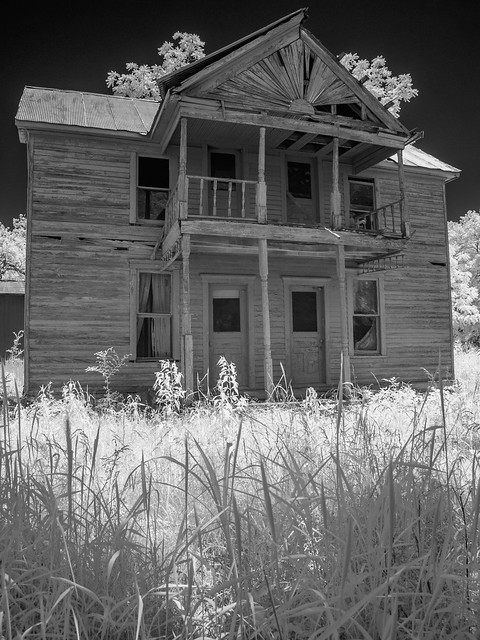 June 20: Bacon Hotel, Whitehall, Arkansas.
June 20: Bacon Hotel, Whitehall, Arkansas.
This two-story hotel was built in 1917, but was only open for a few years (which is surprising, you'd think a place called Bacon Hotel would have more customers). It served as a home for farm workers until the 1950s, but has been empty ever since. It sits along train tracks, surrounded by tall grass and weeds.
#12:
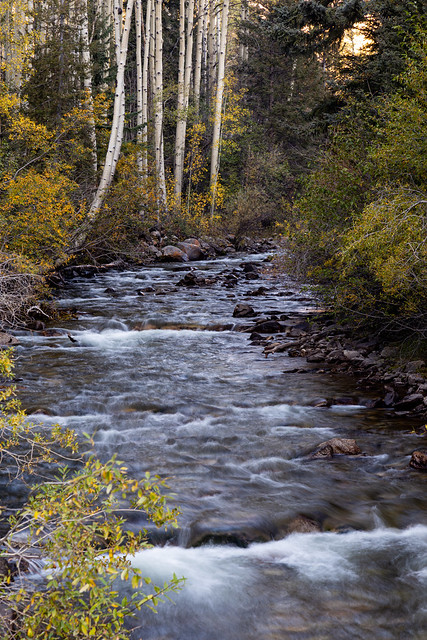 September 25: Chalk Creek, near Buena Vista, Colorado.
September 25: Chalk Creek, near Buena Vista, Colorado.
My cousin got married near the town of Buena Vista, which sits along the Arkansas River. It was amusing to drive by the headwaters of the Arkansas River, and to see it where it's just a small stream that you could literally jump across. But one morning we woke up early and headed up to take pictures along Chalk Creek, which eventually flows into the Arkansas River. There were lots of aspens growing along the creek, and some nice fall colors.
#11:
 August 8: Lonoke, Arkansas.
August 8: Lonoke, Arkansas.
This massive summer storm was bearing down on this poor tractor. It was dropping numerous bolts of lightning, and I tried to capture one but wasn't successful. Of course I had neglected to bring a tripod with me that day, which would have made it easier to get a longer exposure which could have conceivably captured some lighting. But as my wife reminds me, metal tripods in lightning storms usually aren't great mixtures.
#10:
 February 24: Zion National Park, Utah.
February 24: Zion National Park, Utah.
It was after dark and very cold (below freezing) when I stopped at an overlook to get this view of a car passing beneath the towering stone walls of Zion Canyon. Luckily I didn't have to wait too long for a car to drive by while I stood out there in the cold.
#9:
 October 22: Roark Bluff, Buffalo National River, Arkansas.
October 22: Roark Bluff, Buffalo National River, Arkansas.
I did this hike with my nephew, and we got a bit lost and ended up accidentally hiking a few extra miles before finally reaching the overlook. We just only had a few minutes of light before it got too dark for pictures, but I did manage to get this shot of one of the best views of the Buffalo River.
#8:
 September 25: Mt. Princeton, near Buena Vista, Colorado.
September 25: Mt. Princeton, near Buena Vista, Colorado.
Alpenglow on Mount Princeton, which stands at a towering 14,204 feet. It is part of the Collegiate Peaks, a section of the Sawatch Range that was named after famous universities like Princeton, Yale and Harvard. I looked to see if any mountains were named after my alma maters (the University of the Ozarks and the University of Arkansas - Little Rock) but had no luck.
#7:
 July 3: Sheridan, Arkansas.
July 3: Sheridan, Arkansas.
This grand old barn has stood for decades, but now seems to be starting to collapse. I was glad I was able to make the trip down to Sheridan to get a picture of it while it was still around.
#6:
 October 29: Pecan Alley, near Scott, Arkansas.
October 29: Pecan Alley, near Scott, Arkansas.
Luckily there wasn't much traffic when I hurried out into the middle of the road to get a shot of this road passing under century-old pecan trees.
#5:
 April 29: Rushing Church, near Dover, Arkansas.
April 29: Rushing Church, near Dover, Arkansas.
This abandoned church sits in the rolling foothills of the Ozark Mountains, but I wasn't able to ever find anything about its history. When was it built, when was it abandoned? It was definitely worth the long drive down the country roads to reach it.
#4:
 February 24: Virgin River, Zion National Park, Utah.
February 24: Virgin River, Zion National Park, Utah.
While at Zion we hiked the Riverside Walk, which is usually described as an easy and family-friendly trail. But it was slightly treacherous since it was covered with slick ice (I slid and fell at least once here). Along the trail I did get a shot of this section of the Virgin River, passing by a stand of snow-covered trees. The contrast between the white snow and the red rocks of Zion were so amazing that day.
#3:

February 26: Inspiration Point, Bryce Canyon National Park, Utah.
The view from Inspiration Point was indeed inspiring. It was hard to stop taking pictures from here, even with it being well below freezing outside.
#2:
 February 24: Canyon Overlook Trail, Zion National Park, Utah.
February 24: Canyon Overlook Trail, Zion National Park, Utah.
The hike to this overlook is short and fairly easy (the hardest thing about it is finding a parking spot). The views are grand. You stand 1000 feet above the canyon, looking at the magnificent stone walls of Zion Canyon and the tiny sliver of road below.
#1:
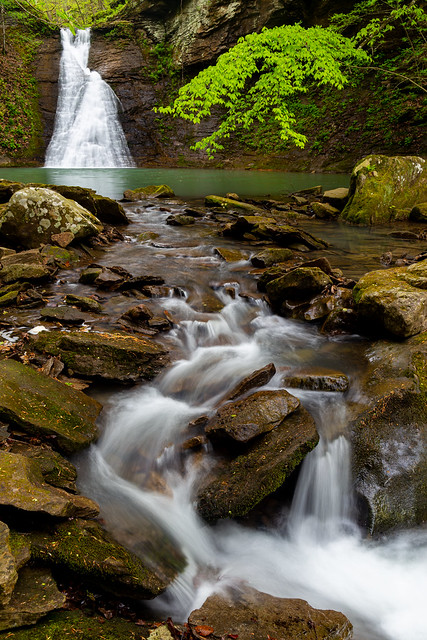 April 30: Paradise Falls, Upper Buffalo Wilderness, Ozark National Forest, Arkansas.
April 30: Paradise Falls, Upper Buffalo Wilderness, Ozark National Forest, Arkansas.
Paradise Falls is only 32 feet-tall, but it definitely lives up to its name. The deep pool at its base was an emerald green, and the creek then flowed past moss-covered rocks. It is not an easy hike to reach, but it is one of the prettiest waterfalls in the Ozarks.
And thank you, to anyone who reads this and who has stuck with this little blog over the years. I hope you all have a great New Years, and that everyone stays happy and healthy! Here's to a great 2023!


